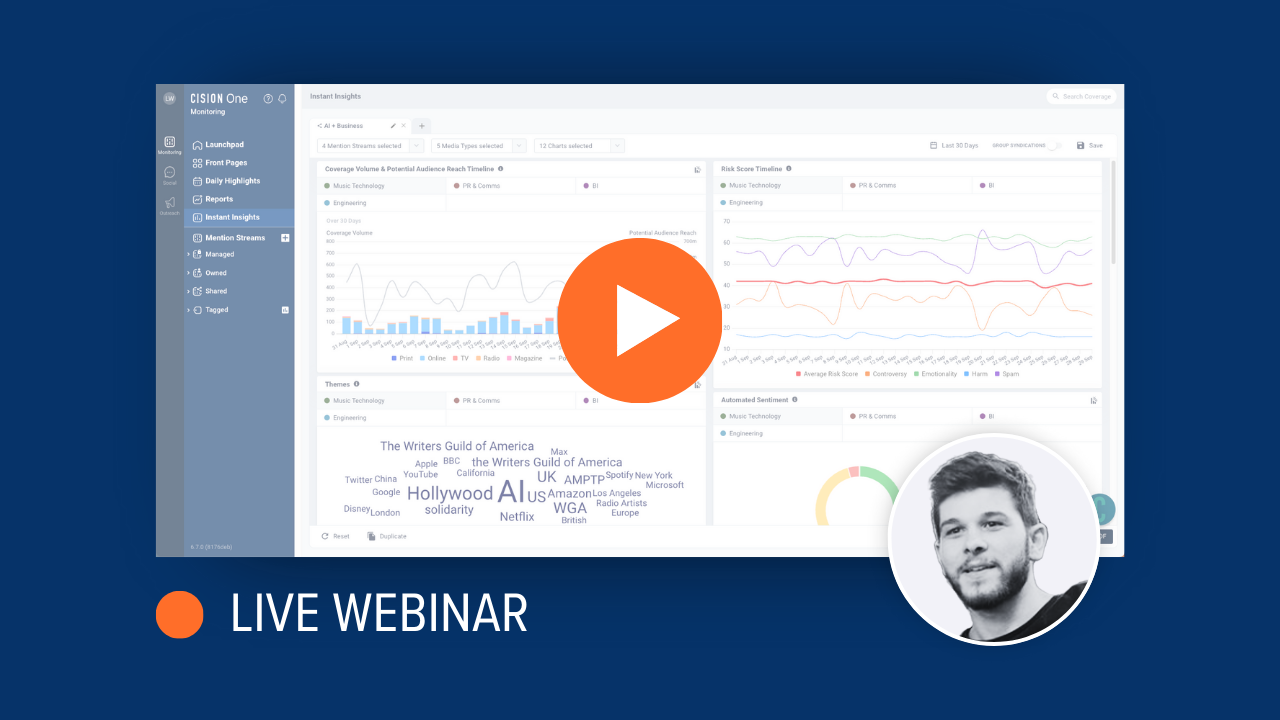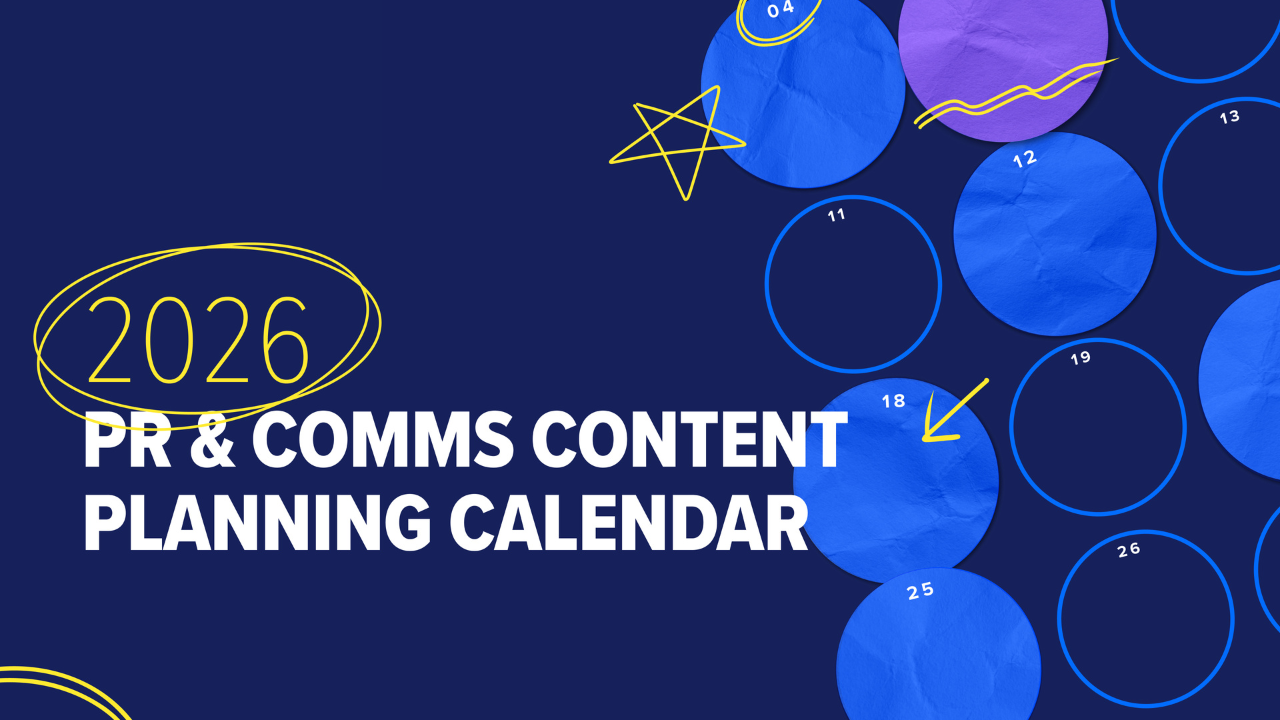The difference between PR and marketing seems to narrow by the day. What were once very distinct functions to a business now have more crossover than ever, partly thanks to how technology has changed the work PR professionals do.
Professionals working on PR within marketing teams and departments used to focus on very specific tasks compared to their colleagues working in other areas. While that split still exists, the line between these marketing functions is getting smaller as the way we connect with audiences change.
Protecting and enhancing brand reputation and telling a coherent brand story – once primarily the responsibilities of PR teams – are areas that other people in marketing teams contribute to now, meaning closer collaboration is more important than ever.
That raises the question, where does PR stand within marketing today?
So, What is Public Relations in Marketing?
Public relations is a strategic discipline that complements the marketing function by using earned media, storytelling, and reputation-building tactics to connect with audiences and shape public perception.
PR professionals use tactics and strategies that generate brand equity, build a positive image, highlight product and service launches and updates, and, ultimately, boost sales and revenue. Some of the strategies that accomplish this are:
- Building relationships with journalists and the media
- Responding to requests for information
- Writing and distributing press releases
- Monitoring brand mentions and crafting responses
- Managing crises and negative attention
The difference between PR and marketing is, broadly speaking, that PR focuses mostly on earned media while marketing covers a wider group of channels, including:
- Paid media, like search engine marketing (SEM)
- Owned media, like your website or blog
- Earned media
- Email marketing
- Content marketing
- Social media marketing
Public relations fulfils a specific role complementary to marketing, but despite the crossover in tasks and goals between both functions, there’s still a need for the specialist skills PR professionals bring.
How to Use Public Relations for Marketing
If marketing focuses on promoting products and services, PR in marketing is about creating compelling stories and building relationships with your target audiences to help customers trust what the brand is offering.
There are plenty of ways PR professionals can help a brand relate to audiences and support wider marketing goals. Examples of such tactics include the following:
Building Media Relationships
One of PR's core functions is building media relationships with journalists and media outlets. Forming successful media relations starts with identifying journalists that cover topics related to your brand and engaging with them to find out how you can help with their challenges. Ultimately, you want to leverage these relationships to try and get more media coverage for your brand.
The relationships you create with journalists can help you contribute to wider marketing goals, such as reaching a wider audience to improve brand visibility, increasing brand reputation through positive media coverage to make you seem more credible, and driving more traffic to your website that can be converted into leads or sales.
For example, if the marketing team is creating a campaign to promote a new product or service, PR professionals could leverage their media relationships to spread the word and generate coverage that might, in turn, increase website traffic and generates sales leads.
Creating Relevant and Useful Content
With so many brands competing for audience attention, one of the biggest challenges PR professionals face is crafting content and campaigns that cut through the noise. That often entails coordinating with marketing to ensure the right content goes through the right channels to get in front of the right audiences.
Press releases are a cornerstone for PR professionals, used to announce events, company news, promote products and services, and ultimately build awareness for the brand and boost interest or demand for a new release or offering. But press releases are just one type of content PR professionals might create in partnership with – and to help meet the goals of – marketing teams.
PR content encompasses various forms of communications designed to enhance brand awareness and shape perceptions. These types of content might take the form of:
- Expert interviews
- Case studies
- White papers or research studies
- Webinars
- Bylined articles by a subject matter expert
- Infographics and visuals
- Content marketing pieces such as articles, guides, reports, tip sheets, and infographics
While these types of content might fall outside the scope of PR, PR teams often have a hand in consulting on them or using them to inform campaigns or press outreach. While PR and marketing teams are both likely to use the content for different goals – where PR might use the content to gain earned media coverage, marketing may use the content to generate sales leads – both are working toward a shared goal of increasing brand awareness and generating positive business results.
Putting Crisis Management Plans in Place
PR professionals are at the frontlines of crisis communications and crisis management. The goal of crisis management is to mitigate the effect a crisis has on the brand or even turn the negative into a positive if possible. Showing audiences the brand listens and acts on negative situations can improve trust, making potential customers feel valued.
Crisis management plays a part in the wider marketing goals by protecting the brand’s reputation, ensuring a continuity of messaging across all channels, and maintaining customer trust. This trust is essential in helping audiences take the actions we want them to, ultimately ending up with a sale or sign-up to help the business grow.
How to Measure Impact with PR in Marketing
Both PR and marketing teams are increasingly expected to show the impact of their efforts, and both might rely largely on media monitoring and social listening to do that. Media monitoring, the act of tracking, analyzing and measuring various media channels for anything relating to your brand, and social listening, the process of tracking conversations across different platforms, enables PR professionals to:
- Identify brand mentions
- Monitor media coverage
- Manage brand reputation
- Monitor news about your brand, industry or competitors
- Monitor competitors
- Understand audience sentiment
- Detect and manage crises
Marketing professionals use media monitoring and social listening, too, but often for slightly different use cases, such as:
- Monitor customer engagement and feedback
- Track and measure sales leads
- Identify consumer trends
- Track campaign performance
While both PR and marketing teams use media monitoring and social listening tools for different reasons and different goals, the data both sides collect complement each other, acting as two parts of a bigger picture that contribute to wider organizational goals. Taking all this data together can help you plan better campaigns that will resonate with your target audience and ensure you put your resources where you’ll see the best results.
Why PR and Marketing Teams Should Work Together
While PR is often a function of marketing, sitting within the marketing department, it can be easy to form silos and miss the opportunity to collaborate, and enjoy the many benefits collaboration brings, including:
- Coherent messaging through integrated campaigns
- Improved brand perception and awareness from multiple channels
- Maximizing budgets for optimum results
- More data to analyze and act on
When PR and marketing work together, collaborating on goals and approaches, and ensuring consistent brand messaging across all channels, you ultimately help build brand trust and credibility for the overall business. You can then monitor your efforts by seeing how much media coverage you get, as well as what people say on social media – which CisionOne can help with by making it easy to monitor mentions of your brand. Once you know what people are saying, you can adapt and improve to make your next campaign even better.
Find out how CisionOne can help you meet the needs of both PR and marketing teams by scheduling a demo today.
Most Recent Posts
Cision Resources
-
E-books and Guides
Comprehensive how-to guides on strategy and tactics
-
Case Studies
What are other brands doing – and how can we learn from them?
About Dave McCreery
Dave is the Senior Content Manager at Cision specializing in SEO-driven content strategies. He has over 10 years of content creation experience and proven success crafting stories that engage, educate, and entertain audiences across different markets and industries.
Learn More. Do More. demo new
PR Tips, Case Studies, and Product Updates

[On-Demand Webinar] The Next Generation of Media Intelligence: From Gorkana to CisionOne
Explore CisionOne, a revolutionary media intelligence platform, and the evolution of Gorkana. Learn key features and strategies from Luke Williams, CisionOne Product Marketing Manager. Elevate your media outreach to new heights!


